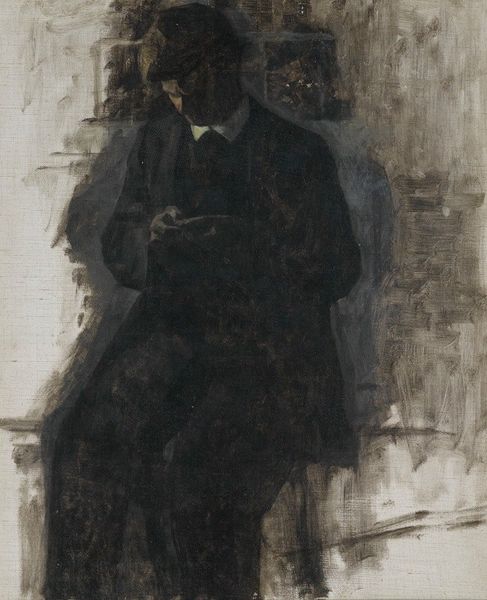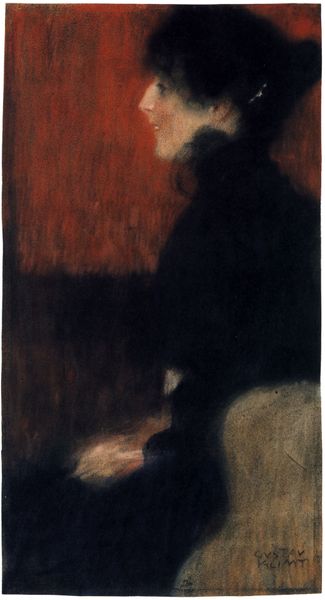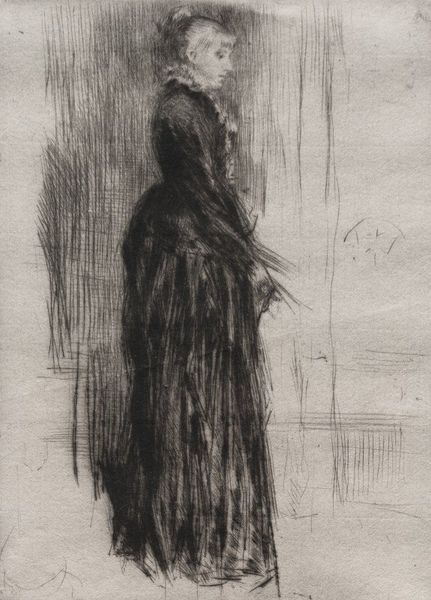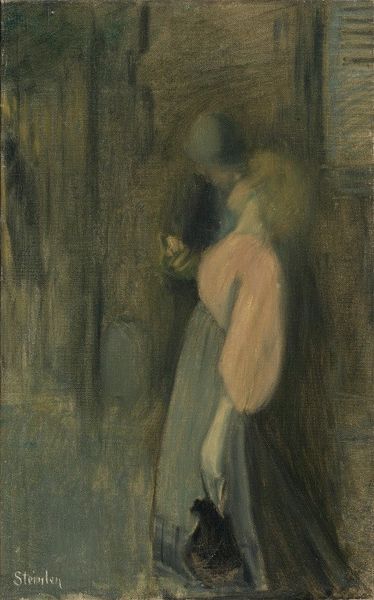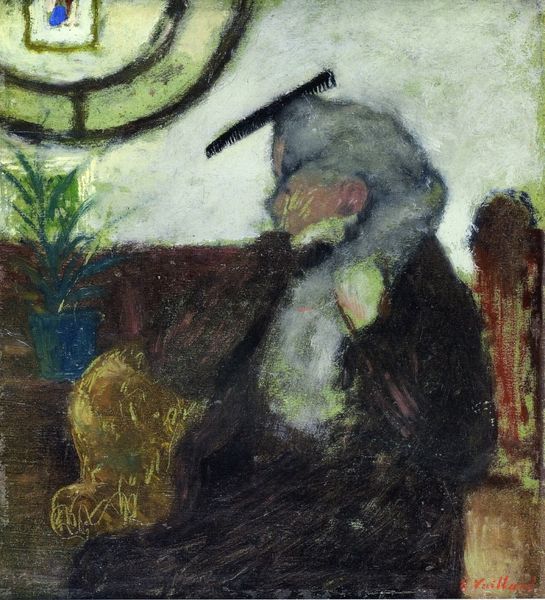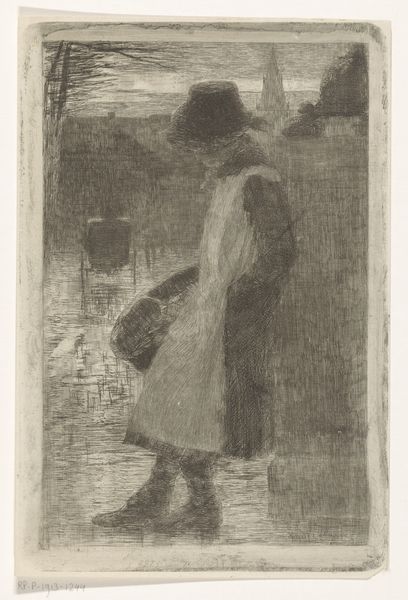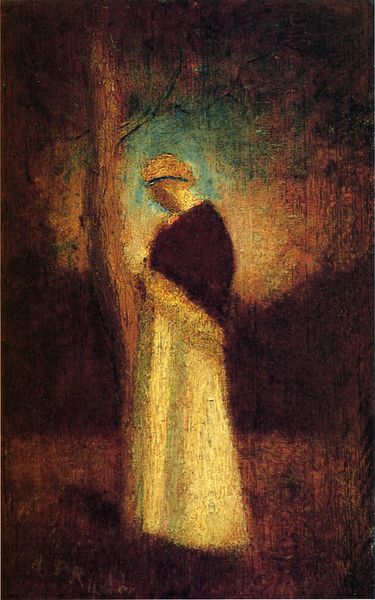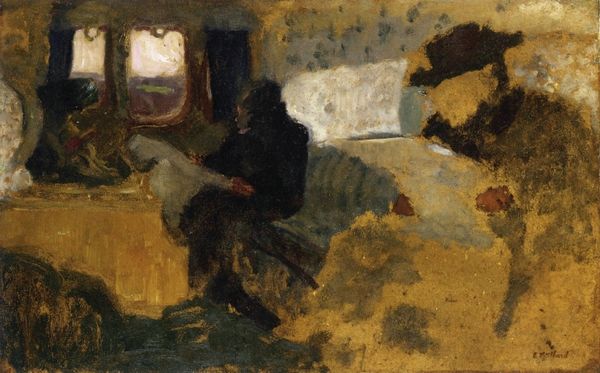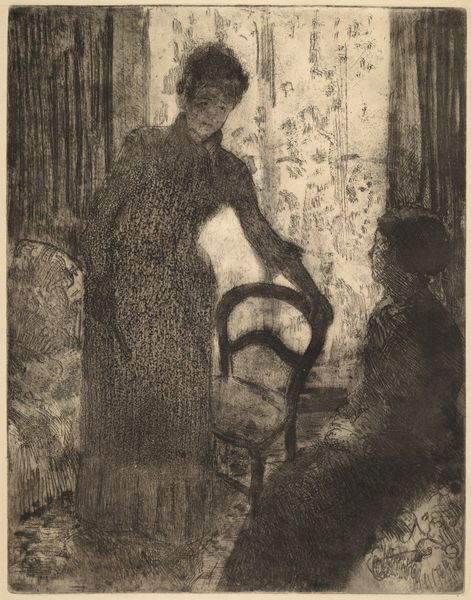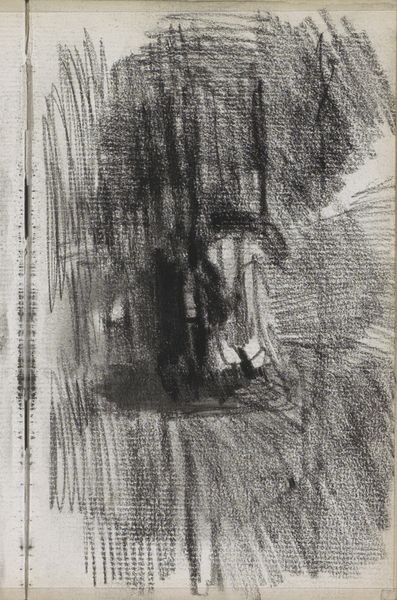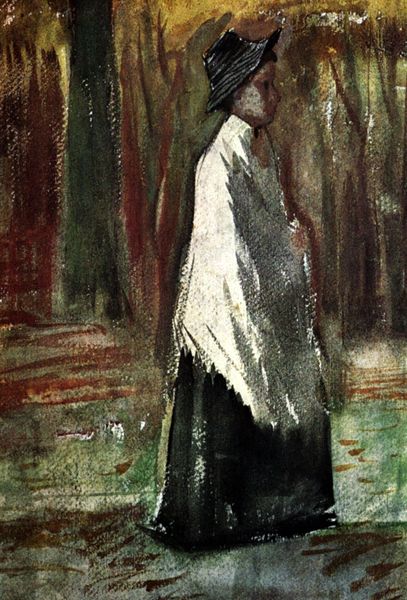
drawing, pastel
#
night
#
drawing
#
landscape
#
intimism
#
pastel chalk drawing
#
symbolism
#
pastel
Copyright: Public domain US
Editor: Here we have "Twilight" by Mstislav Dobuzhinsky, created around 1900 using pastel. It has a decidedly somber, almost melancholic feel. What structural elements stand out to you? Curator: Indeed, the dominant verticality, reinforced by the elongated strokes, immediately commands attention. Note how this linearity, present in both the suggested interior and the implied landscape viewed through the window, creates a sense of contained, perhaps even repressed, energy. What effect do you think the artist achieves by obscuring the figures? Editor: It’s interesting you mention energy because to me, the obscuring of the figures and objects almost flattens the scene. Does that play into the intimist style, where private moments are sort of abstracted, internalized? Curator: Precisely. Intimism hinges on the reduction of the subject to its essential form. Observe the tonal gradations: The interplay of dark greens and muted yellows suggests a dialogue between interior reflection and the beckoning exterior world. Does the fenestration act as a framing device or a barrier here? Editor: A bit of both, I think. The yellow glows, but there's something restrictive about those dark, strong verticals breaking the picture. Curator: Good. The use of pastel, inherently soft, here achieves a remarkable degree of structural rigidity. The surface texture—notice the visible grain—emphasizes the material’s role in shaping our perception. Considering that Dobuzhinsky moved away from purely aesthetic movements later in his career, what potential can we read into the stark geometry used? Editor: It foreshadows his future exploration into set design? The grid provides structure, and limits what might be present, allowing for something novel? That's a useful thought, to apply form this way. Thanks! Curator: An astute observation. Such careful visual analysis, informed by material and context, deepens our understanding.
Comments
No comments
Be the first to comment and join the conversation on the ultimate creative platform.
